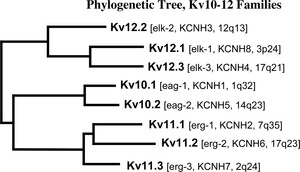Kv12.3
Description: potassium voltage-gated channel, subfamily H (eag-related), member 4 Gene: Kcnh4 Alias: Kv12.3
Kv12.3 (also known as BEC2; ELK1), encoded by the gene KCNH4, is a sodium, voltage-gated, type I, alpha subunit channel. Kv12.3 is is brain-specific, and located in the neocortex and the striatum. It may be involved in cellular excitability of restricted neurons in the central nervous system.
Experimental data
Rat Kv12.3 gene in CHO host cells datasheet |
||
|
Click for details 
15 °Cshow 104 cells |
Click for details 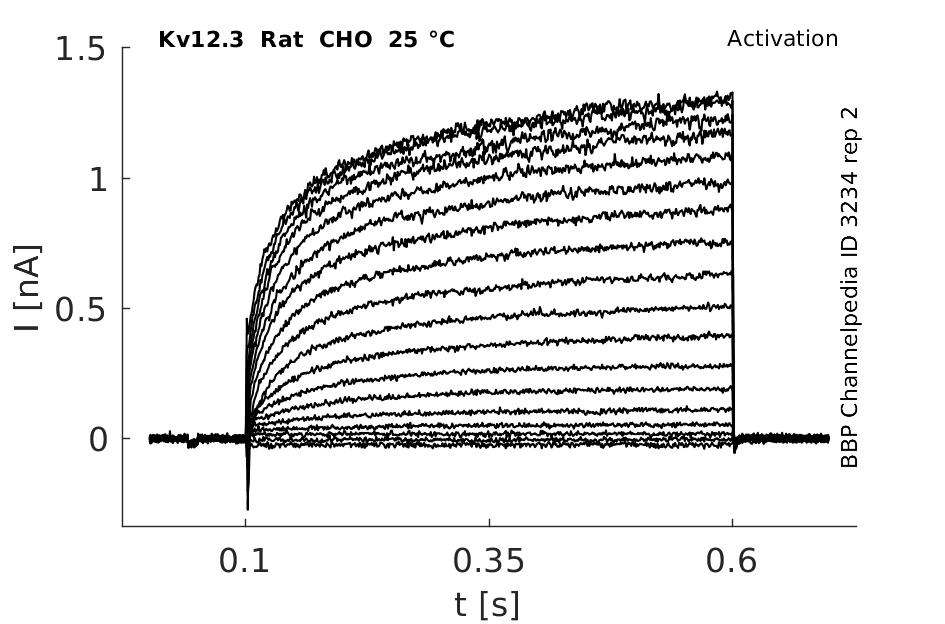
25 °Cshow 73 cells |
Click for details 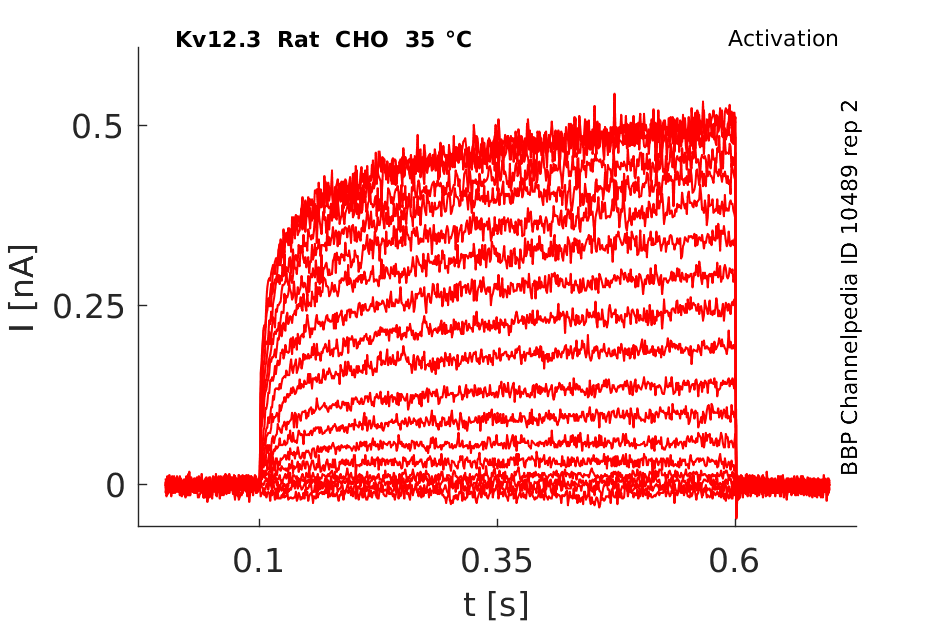
35 °Cshow 208 cells |
Mouse Kv12.3 gene in CHO host cells datasheet |
||
|
Click for details 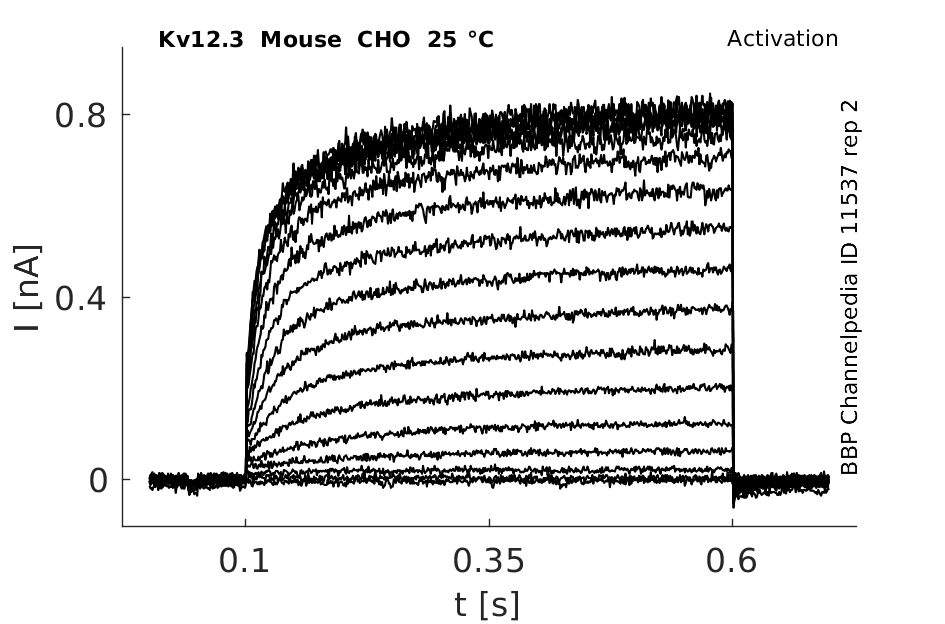
25 °Cshow 64 cells |
Click for details 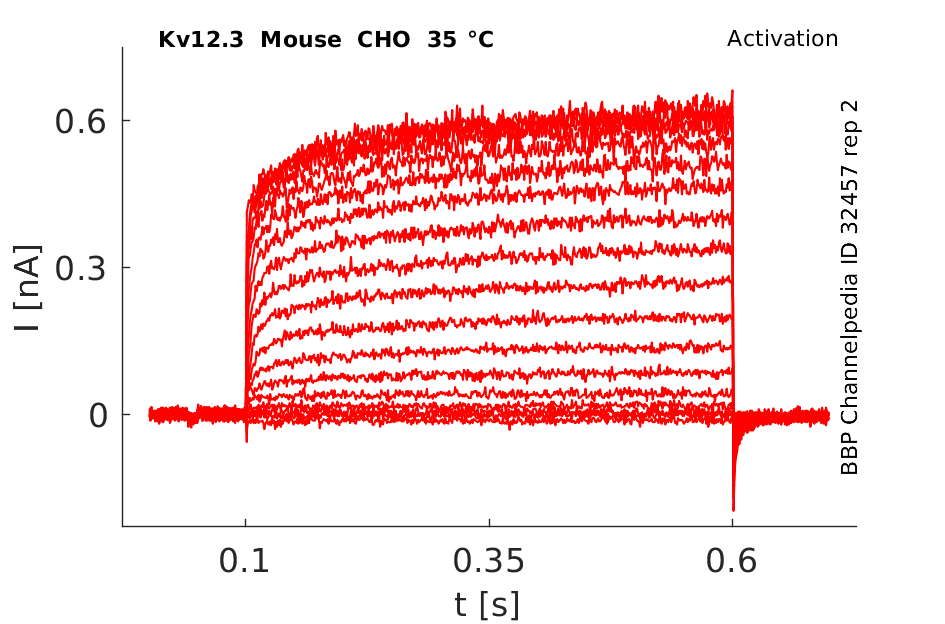
35 °Cshow 176 cells |
|
Human Kv12.3 gene in CHO host cells datasheet |
||
|
Click for details 
25 °Cshow 68 cells |
Click for details 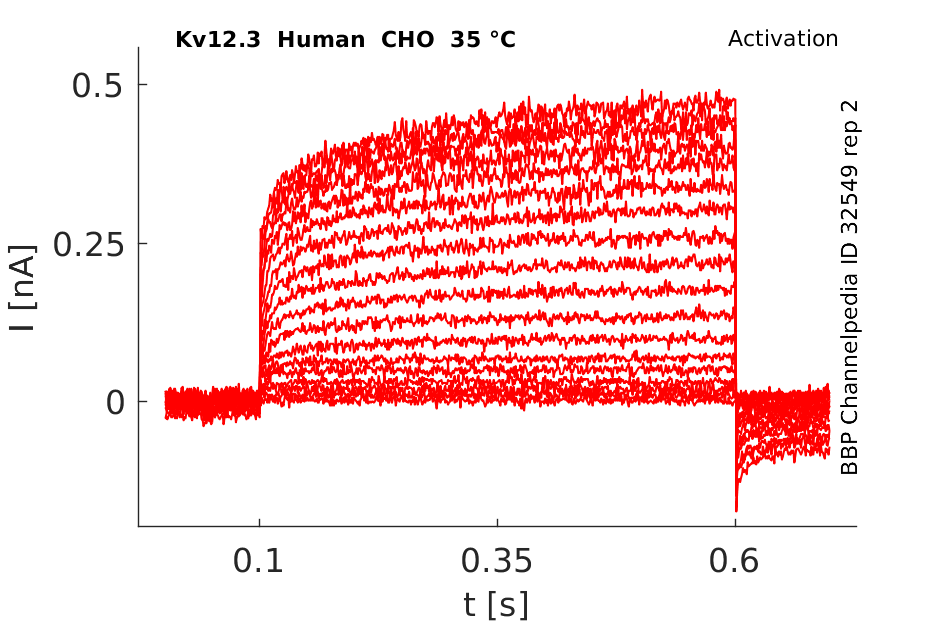
35 °Cshow 133 cells |
|
Phylogenetic tree for the Kv10–12 families. [606]
Transcript
| Species | NCBI accession | Length (nt) | |
|---|---|---|---|
| Human | NM_012285.3 | 3788 | |
| Mouse | NM_001081194.2 | 3784 | |
| Rat | NM_053630.2 | 3746 |
Protein Isoforms
Isoforms
Post-Translational Modifications
Visual Representation of Kv12.3 Structure
Methodology for visual representation of structure available here
There are light oxygen voltage (LOV) and cyclic nucleotide binding (CNB) domains in the N and C terminus, respectively. [606]
Kv12.3 predicted AlphaFold size
Methodology for AlphaFold size prediction and disclaimer are available here
Kv12.3 is a slowly activating voltage-gated potassium channel with threshold for activation at 90 mV [809].
Kv12.3 was identified in the brain (telencephalon),[809], [810] neuroblastoma, esophagus, oligodendroglioma, lung, primary B-cell neoplasia, cerebellum, pituitary gland [795].
Angiogenesis
ELK3 suppresses angiogenesis by inhibiting the transcriptional activity of ETS-1 on MT1-MMP [1760]
Ovarian Cancer influenced by Angiogenesis
MiR-378 was overexpressed in ovarian cancer cells and tumors vs. normal ovarian epithelial cells. Overexpressing miR-378 in ovarian cancer cells altered expression of genes associated with angiogenesis (ALCAM, EHD1, ELK3, TLN1), apoptosis (RPN2, HIPK3), and cell cycle regulation (SWAP-70, LSM14A, RDX) [1761]
Ba2+
Ba2+ blocks Kv12.3. [809]
KCNH8
Coexpression of KCNH8 with dominant-negative KCNH8, KCNH3, and KCNH4 subunits led to suppression of the KCNH8 currents, suggesting that Elk channels can form heteromultimers. [808]
pH

Tau protein and KCNH4 mRNA levels
Overexpression of tau protein lead to the reduction of KCNH4 mRNA levels in mouse neuroplastoma cells [2087]and human neuroplastoma cells [2088]
References
Saganich MJ
et al.
Differential expression of genes encoding subthreshold-operating voltage-gated K+ channels in brain.
J. Neurosci.,
2001
Jul
1
, 21 (4609-24).
Bailey SD
et al.
Variation at the NFATC2 locus increases the risk of thiazolidinedione-induced edema in the Diabetes REduction Assessment with ramipril and rosiglitazone Medication (DREAM) study.
Diabetes Care,
2010
Oct
, 33 (2250-3).
Gutman GA
et al.
International Union of Pharmacology. LIII. Nomenclature and molecular relationships of voltage-gated potassium channels.
Pharmacol. Rev.,
2005
Dec
, 57 (473-508).
Wulfsen I
et al.
Expression of mRNA for voltage-dependent and inward-rectifying K channels in GH3/B6 cells and rat pituitary.
J. Neuroendocrinol.,
2000
Mar
, 12 (263-72).
Zou A
et al.
Distribution and functional properties of human KCNH8 (Elk1) potassium channels.
Am. J. Physiol., Cell Physiol.,
2003
Dec
, 285 (C1356-66).
Engeland B
et al.
Cloning and functional expression of rat ether-à-go-go-like K+ channel genes.
J. Physiol. (Lond.),
1998
Dec
15
, 513 ( Pt 3) (647-54).
Miyake A
et al.
New ether-à-go-go K(+) channel family members localized in human telencephalon.
J. Biol. Chem.,
1999
Aug
27
, 274 (25018-25).
Heo SH
et al.
ELK3 suppresses angiogenesis by inhibiting the transcriptional activity of ETS-1 on MT1-MMP.
Int. J. Biol. Sci.,
2014
, 10 (438-47).
Chan JK
et al.
MiR-378 as a biomarker for response to anti-angiogenic treatment in ovarian cancer.
Gynecol. Oncol.,
2014
Jun
, 133 (568-74).
Kazmierczak M
et al.
External pH modulates EAG superfamily K+ channels through EAG-specific acidic residues in the voltage sensor.
J. Gen. Physiol.,
2013
Jun
, 141 (721-35).
Li X
et al.
Overexpression of tau downregulated the mRNA levels of Kv channels and improved proliferation in N2A cells.
PLoS ONE,
2015
, 10 (e0116628).
Hu XM
et al.
The Tau-Induced Reduction of mRNA Levels of Kv Channels in Human Neuroblastoma SK-N-SH Cells.
J. Mol. Neurosci.,
2016
Feb
, 58 (306-11).
Contributors: Rajnish Ranjan, Katherine Johnston
To cite this page: [Contributors] Channelpedia https://channelpedia.epfl.ch/wikipages/40/ , accessed on 2026 Jan 08
